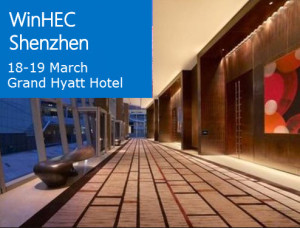It’s a mighty interesting time to be a driver writer who’s interested in Windows.
Those of you who have been doing this for “a long time”, like I have, know that working with Microsoft is a lot like living on a ferris wheel: For a while you’re on the top — Microsoft showers you with interest, inside info, education opportunities, and offers of collaboration — life is grand! But wait a while and you’re down on the bottom — Nobody at Microsoft seems to care about driver or component development unless you’re from a big OEM, there are no conferences scheduled, and you’re left wandering the dessert trying to find your way: “What’s that? You write drivers? That’s terrific. Talk to your OEM. Have a nice day!”
We’ve been through a period of being at the bottom of the ferris wheel for a while. Blame it on post-Vista paranoia and misguided (cough, cough) senior management that has since, thankfully, departed. But I’m here to tell you to get ready: The wheel is definitely on the upswing.

We’re seeing signs that Microsoft is ready to undertake major steps to engage with the Windows driver development community. If you step back for a minute, you’ll see that it’s really not that hard to read the tea leaves. Last April saw the return of free tools for building Windows drivers. This was a major win for the community. Also, you’ll remember the announcement of Shark’s Cove, a stand-alone dev board that could be used to prototype devices and drivers. Later in 2014, support was also announced for the Minnowboard MAX — the single core version of which retails for $99. Notice that neither of these boards was just some hardware stuffed in a box. They were paired with available, free, Windows OS images including drivers for many of the on-board devices.
Of course, if you want a sign of Microsoft’s overall dedication to openness and engagement you have to look no further than how the Windows 10 Technical Previews are being handled. With regular releases and updates, anyone who hasn’t already installed and played with Windows 10 just isn’t interested. And it hasn’t been one-way either: Features and interfaces have actually be changed as a result of user feedback.
But for us driver developers, probably the most important demonstration of the desire to reconnect is the announcement of the return of WinHEC.
As of today, WinHEC is less than two months away. It’s our guess that this conference will showcase Microsoft’s dedication to specifically reconnecting with the Windows driver development community. We predict that dedication will be demonstrated both by the programs offered and the announcements made during the conference. A major hint that Microsoft is serious about engaging with the community is that the conference is being held in ShenZhen. Why ShenZhen? Because it is one of the major tech centers of China (with particular emphasis on the tablet and mobile phone sectors). And much of the material is being presented in Chinese. Think about it: neither of these are particularly convenient for Microsoft. Further, check out what Microsoft is saying to potential attendees about the conference:
Microsoft is excited about the opportunity to come to Shenzhen and meet with the community face-to-face, to learn and share knowledge.

Does any of this sound to you like Microsoft plans to sit on a mountain top and tell people how the world is going to work? It says exactly the opposite to me. I’m seeing much more of a two-way dialog on offer.
Yes, there are interesting times ahead. The ferris wheel is definitely on the upswing. Not only are we expecting Microsoft to be more forthcoming with information that’ll help us do our jobs, but we also expect them to be listening as we provide actionable feedback. Just wait! We’re expecting some pretty exciting announcements to come out of WinHEC ShenZhen. And, of course, you can be sure you’ll read about them here first.
